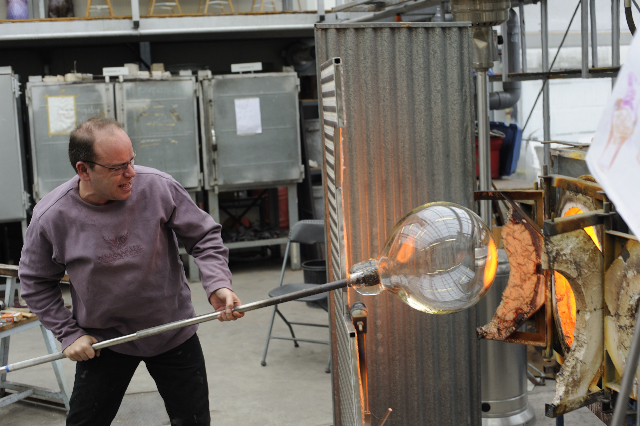WEX Machine – W139
The WEX Machine, The W139 EXtender, is a mirroring portal extending the W to the WebWebWeb. It is a new website and permanent installation for W139, an Amsterdam-based exhibition and production space for contemporary art, by Roel Wouters and Erik Borra.
On Friday June 12 the new W139 website will be launched and demonstrated. On a spot-lit table with a touch screen, a high resolution camera, printer, sketchbook and reflective glass globe, visitors will be able to communicate between the physical exhibition space of W139 and the Web in a variety of ways. The WEX Machine has two different faces: a physical installation within W139 itself, as well as its reflection on the web. These two faces are intertwined.
Installation
The installation consists of a table with a touch screen, a silver ball (acting as a lens and mirror), a paper notebook and a printer. A digital camera is suspended over the table taking pictures of the installation at regular intervals.
Website
The website’s background will always show the most recent picture taken. On the Website one will not only be able to browse through all the exhibitions, but also through the images of the silver ball – to see what is and was happening in the W. The printer allows everybody to upload works and exhibit in the W139 too. On the touch screen in the installation the website will feature the archive of exhibitions.
Context
The idea is based on (new) media theories about the Memex, and on projects like ‘dot walk’ which retranslates situationist psycho-geography into the present. In 1945 Vannevar Bush stated that the Memex was a proto-hypertext machine. This table would allow the user to link several texts but also video; and would automatically create cross-references. This leads to associative pathways of material which at any moment could be consulted, added to, separated or changed. The Memex idea materialized more or less in the web’s hypertextuality. The WEX machine starts from the same basic principle: a table giving access to the archive and allowing for the construction of associative pathways.
The Memex would have proposed an archive on microfiche inserted in the table; in this installation a touch screen is inserted, giving access to the database. Visitors, whether online or offline, can contribute to both installation and site. Visitors to the site can upload a file and print it on the printer at the installation. Visitors to the W139 will be able to leave notes, which are automatically photographed and displayed online. If the touch screen is not used for a while it will start browsing through the archive by itself, following pathways (clicks) chosen by the site’s other online and offline users. The visitors’ behaviour is thus used as user generated and curated content within the installation but also on the website. This psycho-geography generated by the users of the archive, allows joining somebody else’s routes when discovering w139. In this way an individual visit to the site or installation turns into a collective experience of walking apart together.
12 June 2009, 21h
Warmoesstraat 139, Amsterdam
Program:
– Talk of Florian Cramer, Lecturer in Media Design
– Introduction to the WEX machine by Erik Borra & Roel Wouters
– a live collaborative opening performance on the WEX, with the hottest band in town: SuperCity


